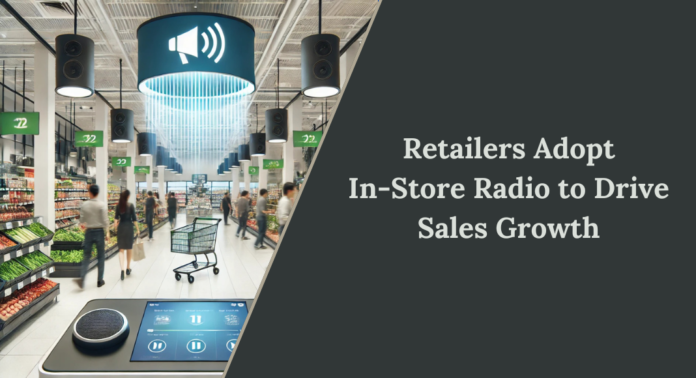The Phenomenon of In-Store Radio
Retailers are increasingly adopting in-store radio to market and communicate new promotions to enhance shopping experience. Supermarkets, by playing music and ads specific to certain products, seek to modify the supermarket environment to make it more appealing and effective. The addition of in-store radio is becoming more popular as businesses try to find new ways to change a customer’s experience in the store to be more favorable for them and the company.
With the help of in-store radio, supermarkets can relay information to customers when they are most ready to receive it, including marketing messages, promotional offers, and product details. This not only promotes understanding of the supermarkets’ products and services, but also promotes the company’s brand. As technology improves, many marketers use store specific radio stations that play advertisements targeted to specific stores for different regions.
The Effect of Music on Sales
Studies show that music can increase sales by 10% for customers who are stressed or tired. It has been known for ages that music has a psychological effect on an individual’s shopping behavior. A good example of this is when slower music is played in a store setting which compels shoppers to stroll leisurely through the store, eventually leading to higher sales.
There is a positive correlation between background music and customer satisfaction. It becomes especially useful in busy retail spaces where people might get annoyed at long checkout lines or even in congested aisles. Music lowers anxiety which makes customers feel good and promotes the willingness to buy during in-store sales events. Food stores take advantage of this by playing background music along with advertisements of limited special deals as a way to strengthen advertising without overloading shopping consumers.
Questions and Reply from Consumers
In-store audio improves customer engagement, but does not seem to be widely accepted. Some customers and employees feel the music is overbearing, leading to stress and loss of its intended positive benefit. For example, loud or fast music can be stressful for some customers. Likewise, constant airing of commercials may be annoying after a while which can severely diminish the effectiveness of the shopping experience.
Employee opinion is very vital and directly influences in-store radio policies. Since retail employees are in the store for long shifts, the omnipresence of music and promotional messages may have a bearing on their morale and output. Therefore, some retailers allow some flexibility in the timing and the volume of music to cater to both customers and employees.
Choosing the Best Audio for the Right Purpose
To get the best results from in-store radio, retailers are trying different genres, varying the intensity of sound, and creating specific playlists for specific hours of the day. For instance, modern energetic music may be played in the morning during the rush period, while the evening selection may be more soothing to encourage leisurely shopping. In addition, supermarkets are playing into the holiday spirit by using seasonal songs that correspond with shopping seasons to enhance customer satisfaction.
Technology is enhancing the fine-tuning of in-store radio systems. Some retailers are utilizing AI-powered music curation programs that design playlists to best fit customers’ genders and lifestyle choices. This enables in-store music to be played according to the preferences of most shoppers, thus increasing satisfaction and engagement.
Another example of a new trend is the use of server side ad insertion targeted to specific store locations. This enables supermarkets to advertise specific deals on products that are relevant to that region or store, thus making the advertisements more useful to the customers. With the right combination of music, ads, and announcements, a good atmosphere for shopping can be created.
Messages for us
It is clear that the in-store radio is relevant to supermarkets aiming to improve their shopping experience and sales. This tool, however, needs careful customization to ensure its benefits do not outweigh its drawbacks. Carefully chosen music, optimal volume, and refined supplementary messages balance the needs of both customers and staff.
With changing customer needs, it is likely that the in-store radio will be widely adopted in the contemporary supermarket. As the technology and analytics capability improves, retailers will have more opportunities to customize the audio, enhancing the shopping experience while increasing their profits. Understanding the specific requirements of every store and fine-tuning the balance between engagement and efficiency defines the essence of achieving the optimal audio experience.

